Support Village Voice News With a Donation of Your Choice.
Minister of Education Priya Manickchand has since clarified in the media that the government has no plan to scrap the National Grade Six Assessment (NGSA) but is looking for ways to equalise resources at the secondary schools. NGSA is used to determine placement in secondary schools. Guyana needs an education system, including periodic evaluation and school placement, consistent with the country’s uniqueness and developmental agenda. The system must be built on a philosophical direction with the involvement of all.
Decisions should not be made without understanding the full ramifications and relevance of education to society. Placement should also recognise students develop at various pace, have different skills and interests. The present curricula have many deficiencies such as absence of teaching basic human rights, understanding of Guyana Constitution and the civic responsibilities of citizens.
If students learn early about the fundamentals of human relations in developing self and community it would augur well for creating a society that values the motto “One People, One Nation, One Destiny.” Civic education could help in nurturing new generations to value the importance of peaceful co-existence and working together to build Guyana.
Students are not being taught the fullness of the country’s greatness through the centuries of struggles and achievements of all their forebears. They are not being imbued with the sense of pride and value in building Guyana. Where the national conversation is often slanted in partial and dishonest representation of events, history and peoples, the education system is failing students at the most basic in shaping and giving them the truth, a sense of identity, purpose and worth.
Evidently recent changes in Guyana’s post-independent education have had the influence of the United States (U.S) education structure. At university, Guyana moved from the trimester to the semester model after officials thought copying the U.S was better. The traditional Prep A to Form Five has since changed to the U.S identification of Grades 1-12. Even the language structure, spelling included, is no longer Caribbean/British English but the U.S. This is confusing students and handicapping them among their regional counterparts who are still using Caribbean/British English.
Guyana has lost its way. The tendency to copy others without full understanding of what is being done does Guyana no good. Even the admired U.S K-12 (Kindergarten to high school) education is not without harsh criticism by American educators and other experts in the field. Some have argued the No Child Left Behind Policy has been leaving children behind amidst concerns of functional illiteracy and America’s global competitiveness.
It is noteworthy while Guyana copies the superficial, the country is ignoring the substantive. Early in America students are taught about their political system, the U.S Constitution, history and rights. Schools are also equipped with various disciplines to teach children based on interest and skills. There are U.S schools that recognise high achievers and those with unique skills and various disabilities. Guyana does not have these nor close to achieving them.
In hindsight, rather than the People’s Progressive Party government scrapping the Community High Schools they should rethink re-opening them. That school, at least in intent, sought to facilitate children with stronger leaning to technical and trade competencies. The multilateral schools should have also been more equipped for a 21st century economy given its many layers to education.
Guyana has failed its students in some areas and should seek to correct the deficiencies. Critical thinking, sensible and a relatable national vision must guide education from nursery to university. With certainty, no proper system could evolve through willy nilly actions or copying others without full understanding and appreciation of what has shaped their system and must uniquely shape Guyana’s.















